Abstract
The cellular morphology, identifying physiological characteristics, and a key to the human genera of Micrococcaceae are presented with flow charts for identification of aerobic and anaerobic isolates. These flow charts can be amended as desired, depending upon the degree of accuracy desired. Micrococcaceae isolates in a 350-bed private general hospital during a 15-week period are tabulated to show relative numbers of the different genera and species, with their probable relationship to infection or contamination. Only 11 of the 220 Micrococcaceae isolates were not Staphylococcus; no Sarcina or Peptococcus were isolated. Of the Staphylococcus isolates, 61% were S. epidermidis. Almost 18% of the S. aureus isolates were coagulase-negative. Of the S. aureus isolates, 80% of the coagulase-positive isolates were infecting agents, as were 67% of the coagulase-negative S. aureus isolates, compared to only 48% of S. epidermidis isolates. Two of four Gaffkya isolates but only one of seven Micrococcus isolates were infecting agents. If coagulase production is used as the sole criterion for speciation of staphylococci, and Micrococcus is not differentiated from Staphylococcus, the term “coagulase-negative staphylococci” does not differentiate three distinct levels of pathogenicity. Coagulase-negative S. aureus is more virulent than S. epidermidis or Gaffkya, which are more virulent than Micrococcus or Sarcina.
Full text
PDF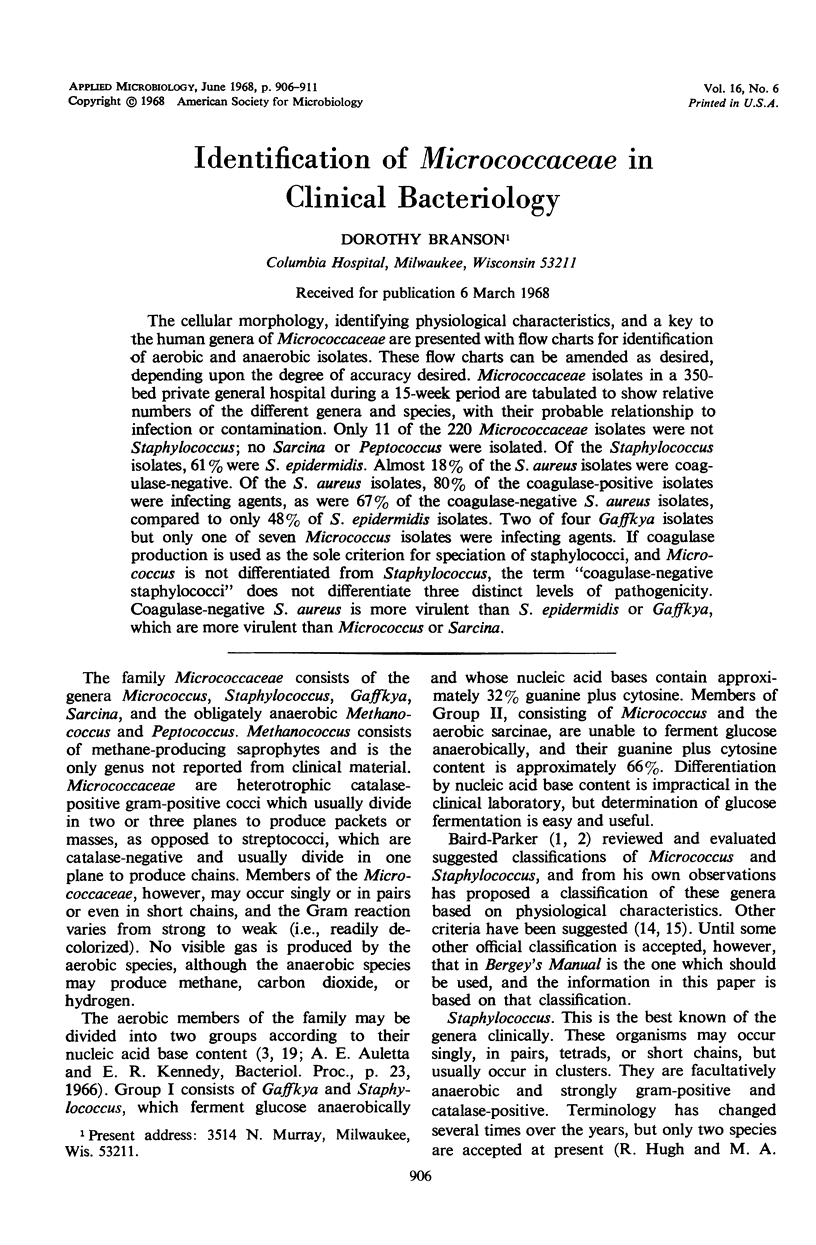
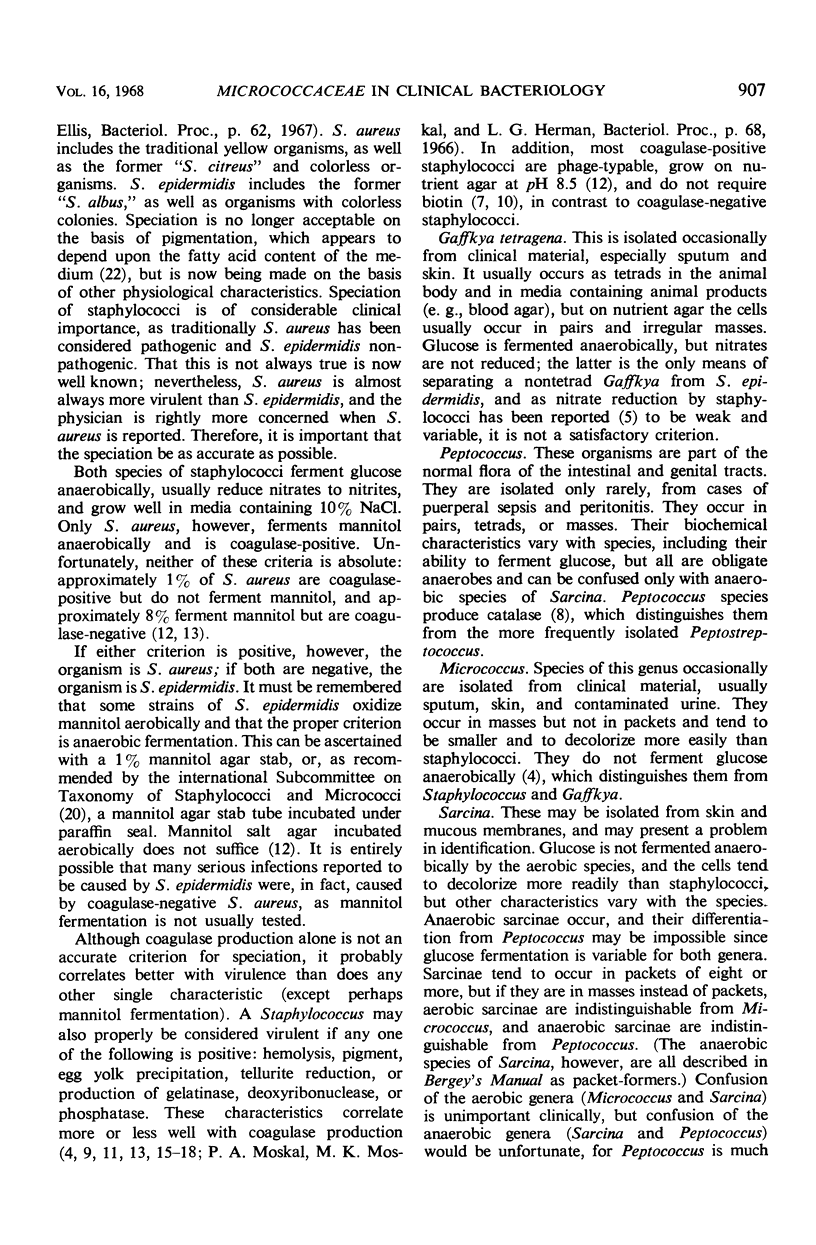
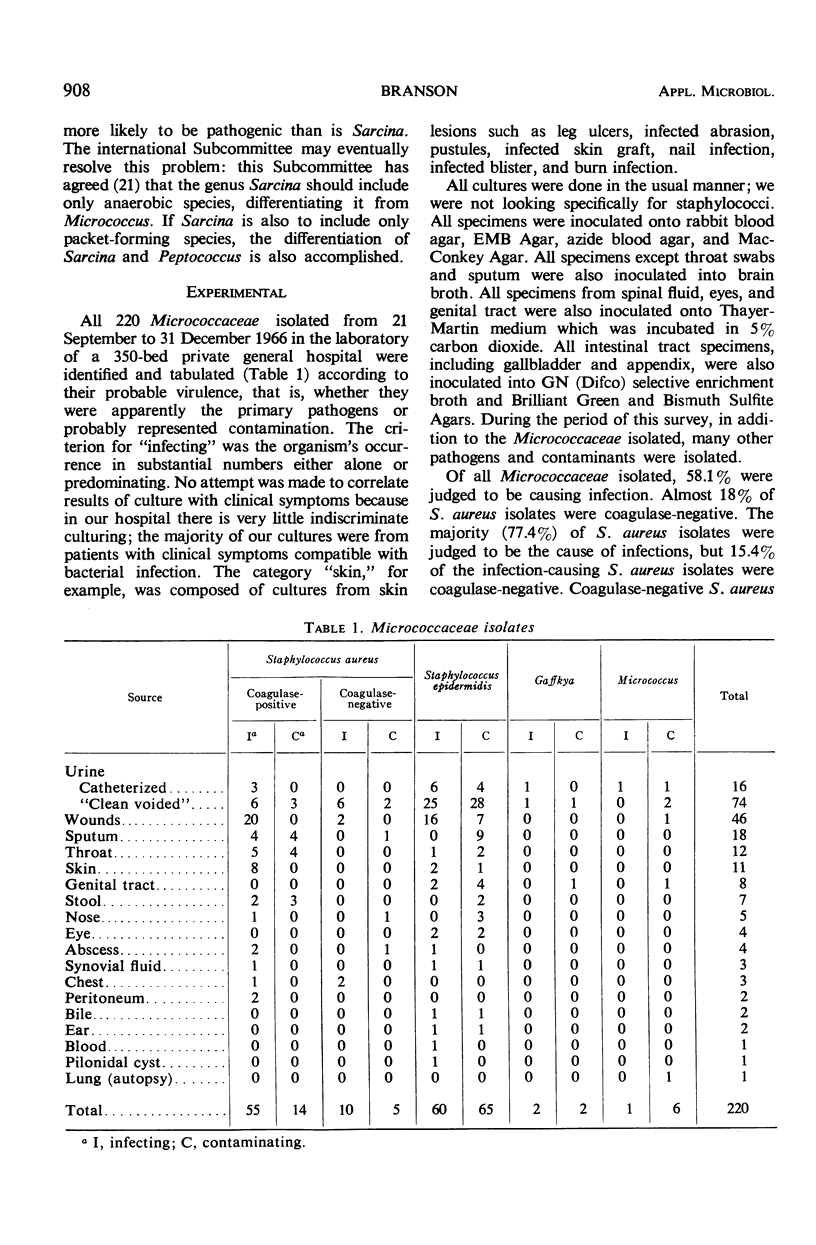
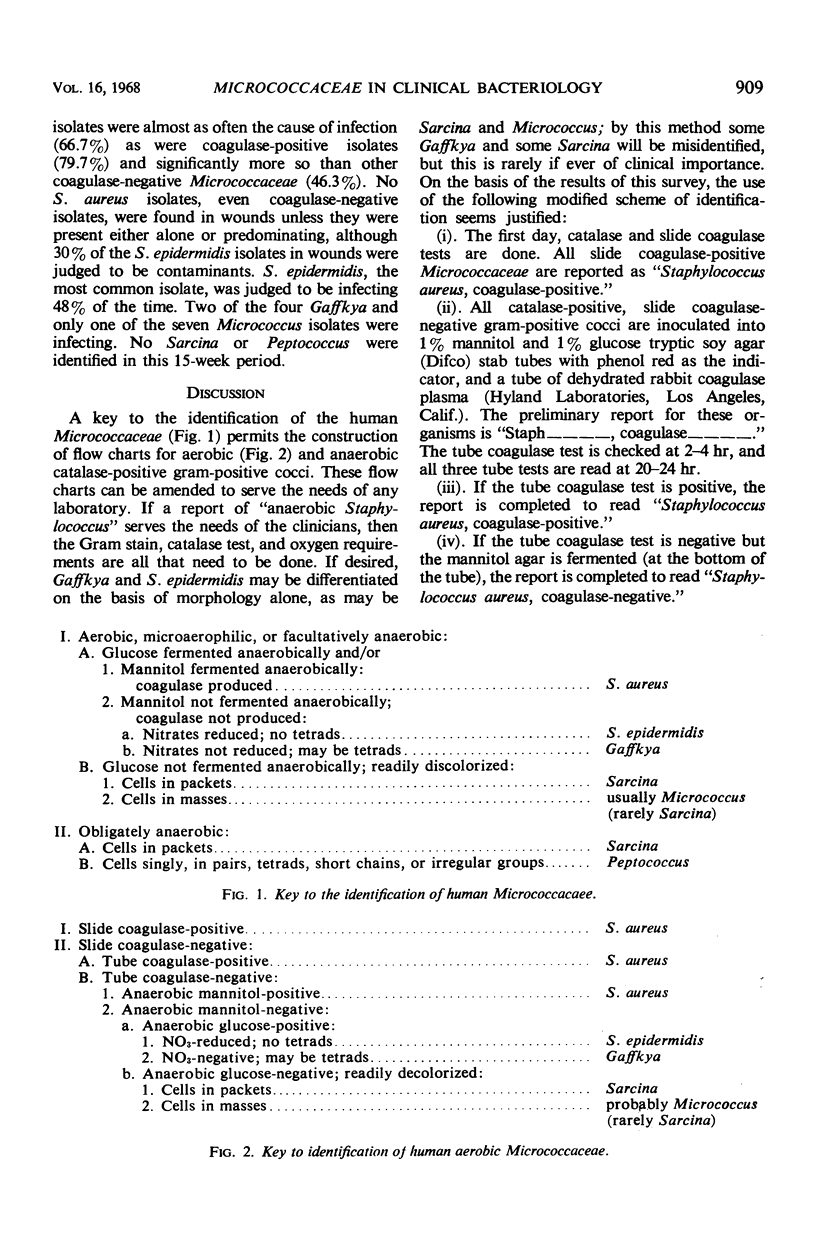
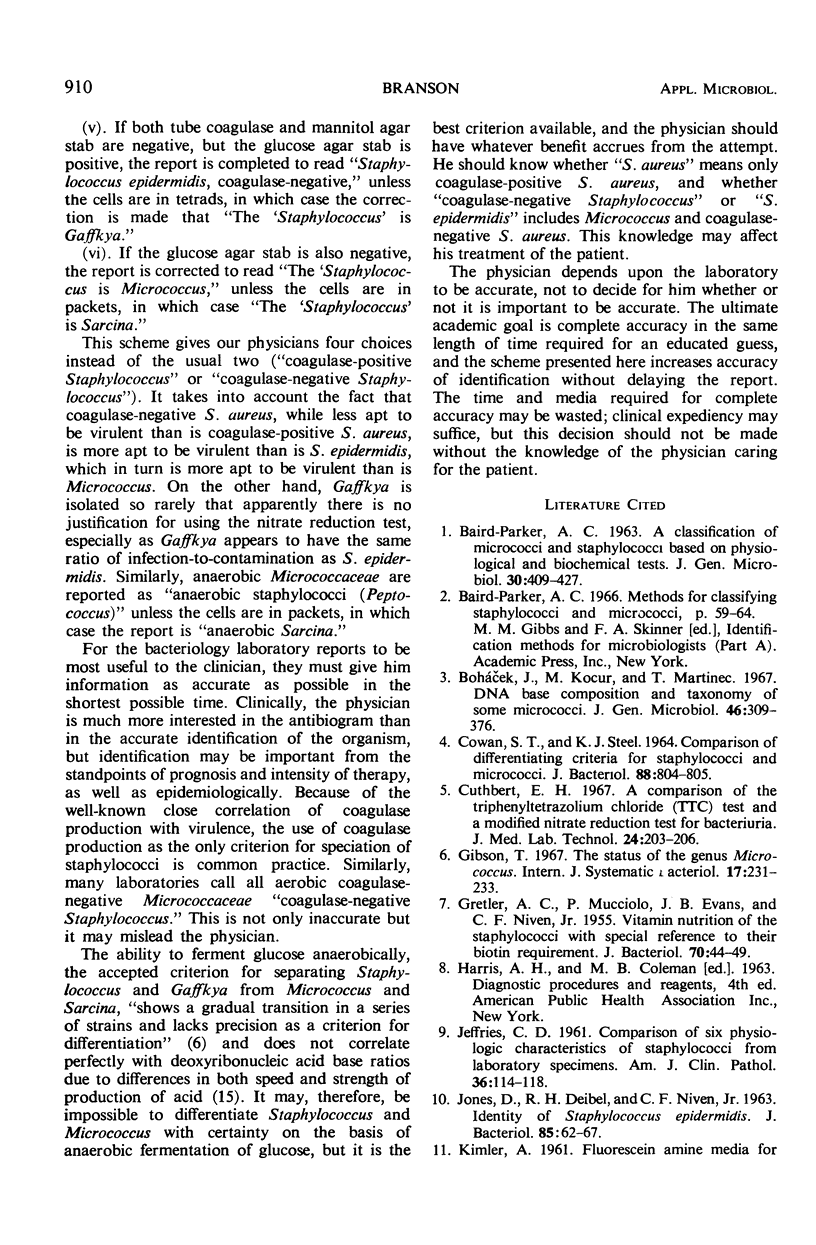
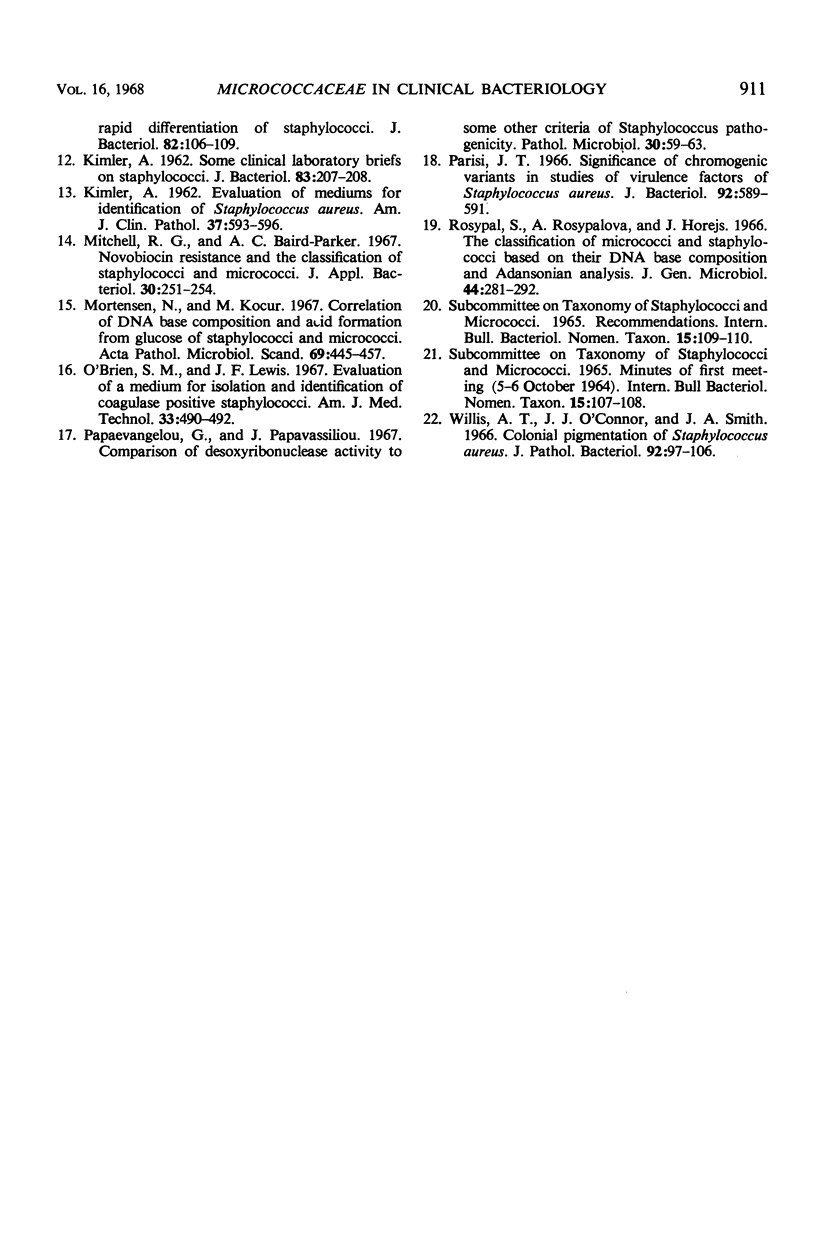
Selected References
These references are in PubMed. This may not be the complete list of references from this article.
- BAIRD-PARKER A. C. A classification of micrococci and staphylococci based on physiological and biochemical tests. J Gen Microbiol. 1963 Mar;30:409–427. doi: 10.1099/00221287-30-3-409. [DOI] [PubMed] [Google Scholar]
- COWAN S. T., STEEL K. L. COMPARISON OF DIFFERENTIATING CRITERIA FOR STAPHYLOCOCCI AND MICROCOCCI. J Bacteriol. 1964 Sep;88:804–805. doi: 10.1128/jb.88.3.804-805.1964. [DOI] [PMC free article] [PubMed] [Google Scholar]
- Cuthbert E. H. A comparison of the triphenyl tetrazolium chloride (TTC) test and a modified nitrate reduction test for bacteriuria. J Med Lab Technol. 1967 Jul;24(3):203–206. [PubMed] [Google Scholar]
- GRETLER A. C., MUCCIOLO P., EVANS J. B., NIVEN C. F., Jr Vitamin nutrition of the staphylococci with special reference to their biotin requirements. J Bacteriol. 1955 Jul;70(1):44–49. doi: 10.1128/jb.70.1.44-49.1955. [DOI] [PMC free article] [PubMed] [Google Scholar]
- JEFFRIES C. D. Comparison of six physiologic characteristics of staphylococci from laboratory specimens. Am J Clin Pathol. 1961 Aug;36:114–118. doi: 10.1093/ajcp/36.2.114. [DOI] [PubMed] [Google Scholar]
- JONES D., DEIBEL R. H., NIVEN C. F., Jr Identity of Staphylococcus epidermidis. J Bacteriol. 1963 Jan;85:62–67. doi: 10.1128/jb.85.1.62-67.1963. [DOI] [PMC free article] [PubMed] [Google Scholar]
- KIMLER A. Evaluation of mediums for identification of Staphylococcus aureus. Am J Clin Pathol. 1962 Jun;37:593–596. doi: 10.1093/ajcp/37.6.593. [DOI] [PubMed] [Google Scholar]
- KIMLER A. Fluorescein amine media for rapid differentiation of staphylococci. J Bacteriol. 1961 Jul;82:106–109. doi: 10.1128/jb.82.1.106-109.1961. [DOI] [PMC free article] [PubMed] [Google Scholar]
- KIMLER A. Some clinical laboratory briefs on staphylococci. J Bacteriol. 1962 Jan;83:207–208. doi: 10.1128/jb.83.1.207-208.1962. [DOI] [PMC free article] [PubMed] [Google Scholar]
- Mitchell R. G., Baird-Parker A. C. Novobiocin resistance and the classification of staphylococci and micrococci. J Appl Bacteriol. 1967 Apr;30(1):251–254. doi: 10.1111/j.1365-2672.1967.tb00296.x. [DOI] [PubMed] [Google Scholar]
- O'Brien S. M., Lewis J. F. Evaluation of a medium for isolation and identification of coagulase positive staphylococci. Am J Med Technol. 1967 Nov-Dec;33(6):490–492. [PubMed] [Google Scholar]
- Papaevangelou G., Papavassiliou J. Comparison of desoxyribonuclease activity to some other criteria of Staphylococcus pathogenicity. Pathol Microbiol (Basel) 1967;30(1):59–63. doi: 10.1159/000161644. [DOI] [PubMed] [Google Scholar]
- Parisi J. T. Significance of chromogenic variants in studies of virulence factors of Staphylococcus aureus. J Bacteriol. 1966 Sep;92(3):589–591. doi: 10.1128/jb.92.3.589-591.1966. [DOI] [PMC free article] [PubMed] [Google Scholar]
- Rosypal S., Rosypalová A., Horejs J. The classification of micrococci and staphylococci based on their DNA base composition and adansonian analysis. J Gen Microbiol. 1966 Aug;44(2):281–292. doi: 10.1099/00221287-44-2-281. [DOI] [PubMed] [Google Scholar]
- Willis A. T., O'Connor J. J., Smith J. A. Colonial pigmentation of Staphylococcus aureus. J Pathol Bacteriol. 1966 Jul;92(1):97–106. doi: 10.1002/path.1700920112. [DOI] [PubMed] [Google Scholar]


